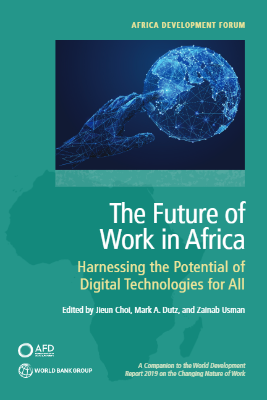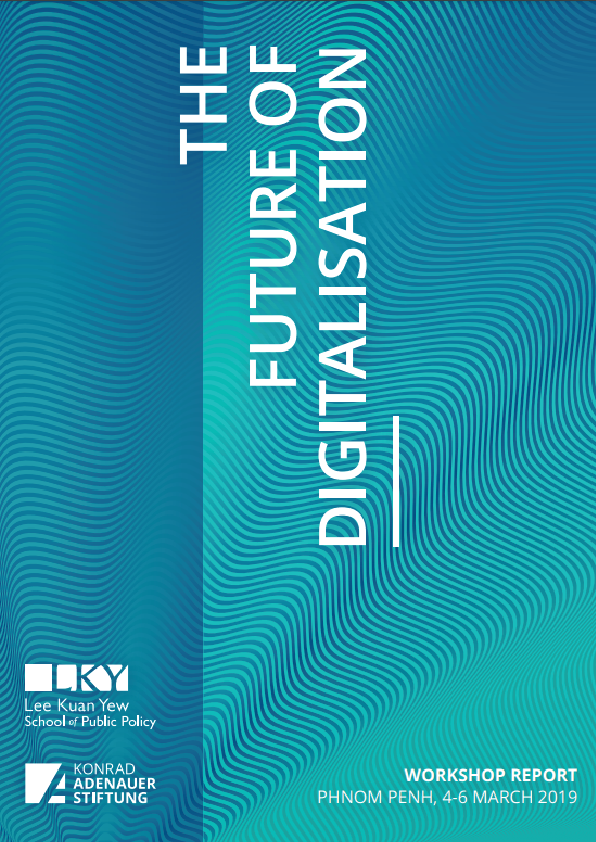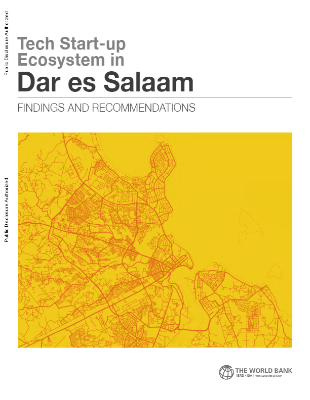The World Development Report 2019: The Changing Nature of Work highlights that the future of work, at the global level, will be determined by the tension between job losses in “old” manufacturing sectors that are susceptible to automation and job gains driven by product innovation in “new” sectors. Is this what the future of work looks like in Africa? The short answer is no. On the contrary, the region—given where it is today—has an opportunity to forge a different path from the rest of the world. Digital technology adoption has the potential, if harnessed effectively, to transform the nature of work for all Africans.
Sub-Saharan Africa is unlike other regions in several ways, including lower levels of technology adoption. It has a much smaller manufacturing base, so automation is not likely to displace many workers in the coming years—though adoption in other countries could slow down local job growth or foreclose some new job opportunities. Most African economies still have low levels of demand for products that are commonplace elsewhere, such as processed food and tourism, retail, and hospitality services. In the region, therefore, the greater consumer responsiveness to the cost and price reductions from technology adoption are likely to help firms grow, create more jobs for all, and produce more affordable products—to the extent that production takes place in African countries. Finally, because most African workers have limited education and tend to do informal work, usable technologies designed to meet their productive needs have the potential to help them learn more and earn more. In most African economies, there is no “old” or “new” sector— there is, however, enormous scope for innovation and growth across all sectors.
Why focus on digital technology adoption in Africa? Because digital technologies have the potential to help build skills not just for a privileged few but for all workers—including those with low education and limited opportunities— and to boost productivity and create better jobs in all enterprises, including informal ones. A recent study has found that the arrival of faster internet in Africa increased jobs not only for workers who had attended university, but also for those whose highest level of education was primary school.
Turning the promise of digital technology into reality depends on putting the right supportive policies in place—what this book and others refer to as “analog complements.” These complements include competition, capital, and capacity—Africa’s “three Cs.” Governments need to ensure that market competition is sufficient to spur and enable rival businesses to adopt new technologies and expand output at affordable prices, thereby generating demand for jobs of most skill types. Businesses need more than money to expand in existing markets and to enter new markets. They need better entrepreneurial and worker human capital and better physical infrastructure capital—reliable electricity and transport as well as digital infrastructure. Finally, countries need stronger capacity to increase public investment in social protection. Such protection will help support greater risk taking by entrepreneurs and workers and support workers in their transitions between jobs. This is no small feat: the challenge of expanding social protection is more daunting in Africa than elsewhere because of low initial coverage, huge needs, and limited fiscal resources.
Turning the promise of digital technology into reality depends on putting the right supportive policies in place—what this book and others refer to as “analog complements.” These complements include competition, capital, and capacity—Africa’s “three Cs.” Governments need to ensure that market competition is sufficient to spur and enable rival businesses to adopt new technologies and expand output at affordable prices, thereby generating demand for jobs of most skill types. Businesses need more than money to expand in existing markets and to enter new markets. They need better entrepreneurial and worker human capital and better physical infrastructure capital—reliable electricity and transport as well as digital infrastructure. Finally, countries need stronger capacity to increase public investment in social protection. Such protection will help support greater risk taking by entrepreneurs and workers and support workers in their transitions between jobs. This is no small feat: the challenge of expanding social protection is more daunting in Africa than elsewhere because of low initial coverage, huge needs, and limited fiscal resources.
The future of work in Africa could be bright. It is up to government policy makers and businesses to make bold choices and investments today that will pave the way for the next generation of African workers, inventors, and entrepreneurs to innovate and thrive.











